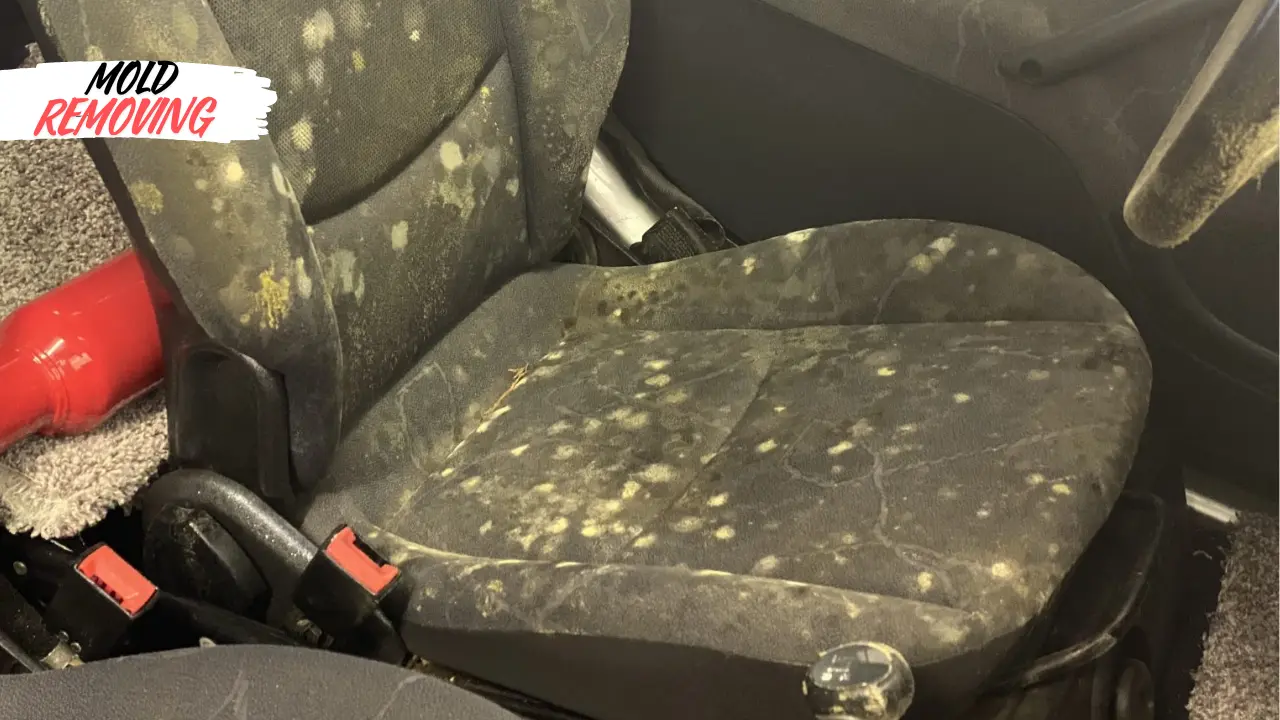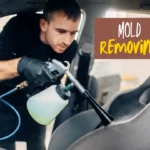Mold growth on leather car seats is not only unsightly but also potentially hazardous to health. Mold can thrive in moist environments, making your car seats susceptible to infestation, especially if there’s been a spill or water leakage.
Fortunately, there are effective methods for removing mold from leather car seats safely and efficiently.
Mold
Before proceeding with the removal process, it’s essential to identify the extent of mold growth on your leather car seats. Inspect the seats thoroughly, including crevices and seams, to determine the affected areas.
Gather Supplies
To effectively remove mold from leather car seats, gather the necessary supplies:
- Soft-bristled brush
- Vacuum cleaner with upholstery attachment
- White vinegar
- Rubbing alcohol
- Distilled water
- Clean microfiber cloths
- Leather cleaner and conditioner
Vacuum the Seats
Begin by using a vacuum cleaner with an upholstery attachment to remove loose mold spores and debris from the leather seats. Be thorough in your approach, ensuring all surfaces are adequately vacuumed.
Brush Away Mold
Using a soft-bristled brush, gently brush the affected areas to dislodge any remaining mold spores from the leather surface. Avoid using stiff brushes, as they may damage the leather.
Prepare Cleaning Solution
Mix equal parts white vinegar and distilled water in a spray bottle. Vinegar is a natural disinfectant and fungicide that effectively kills mold spores without damaging leather.
Test in a Hidden Area
Before applying the cleaning solution to the entire seat, test it in a small, inconspicuous area to ensure it doesn’t cause discoloration or damage to the leather.
Apply Cleaning Solution
Spray the cleaning solution onto the affected areas of the leather seats, ensuring thorough coverage. Allow the solution to sit for a few minutes to penetrate the mold and disinfect the leather.
Wipe Clean
Using a clean microfiber cloth, gently wipe away the cleaning solution and mold residue from the leather surface. Repeat this process as necessary until the seats are clean.
Dry the Seats
After cleaning, allow the leather seats to air dry completely. Avoid using heat sources such as hairdryers, as they can cause the leather to crack or warp.
Apply Leather Conditioner
Once the seats are dry, apply a high-quality leather conditioner to moisturize and protect the leather. Conditioning helps restore the natural oils and prevent future mold growth.

Preventative Measures
To prevent mold growth on leather car seats in the future, take preventive measures such as:
- Keep the car interior dry: Address any leaks or spills promptly and ensure proper ventilation.
- Use a dehumidifier: If your car is stored in a humid environment, use a dehumidifier to reduce moisture levels.
- Regular cleaning: Clean and condition your leather car seats regularly to maintain their condition and prevent mold growth.
Professional Cleaning
If the mold infestation is severe or if you’re unsure about cleaning leather seats yourself, consider hiring a professional leather cleaning service. They have the expertise and specialized equipment to effectively remove mold while preserving the integrity of your car seats.
Safety Precautions
When dealing with mold removal, it’s essential to take safety precautions such as wearing gloves and a mask to prevent inhalation of mold spores.
Final Inspection
After cleaning, inspect the leather seats thoroughly to ensure all mold has been removed. If any mold spots persist, repeat the cleaning process or seek professional assistance.
Conclusion
Removing mold from leather car seats requires patience, attention to detail, and the right cleaning techniques. By following these steps and preventive measures, you can effectively eliminate mold and keep your leather car seats looking clean and well-maintained.
FAQs
- 1. Can I use bleach to remove mold from leather car seats?
It’s not recommended to use bleach on leather, as it can cause discoloration and damage the material.
- 2. How often should I clean and condition my leather car seats?
It’s advisable to clean and condition leather car seats every 1-3 months to maintain their condition and prevent mold growth.
- 3. Will vinegar smell linger after cleaning?
No, the vinegar smell will dissipate as the seats dry. You can also use a leather conditioner with a pleasant scent to mask any residual odor.
- 4. Can mold on leather car seats cause health problems?
Yes, mold exposure can lead to respiratory issues, allergies, and other health problems, so it’s essential to remove mold promptly and effectively.
- 5. Is it possible to prevent mold growth entirely on leather car seats?
While it’s challenging to entirely eliminate the risk of mold growth, regular cleaning, proper maintenance, and preventive measures can significantly reduce the likelihood of mold infestation.


